Question of the Week: May 5, 2016
“What is happening to my Indian hawthorns and redtip photinias? What can I do to stop it?”
This is Entomosporium fungal leaf spot. I first saw it become epidemic 20 or 25 years ago. At that time it was primarily on redtip photinias, but then I noticed it on my Indian hawthorns at our front door. After a couple of years they started to defoliate, and I knew it was time to replace them.
The problem was (and still is) that there is no reliable way of preventing or curing the fungus. Traditional fungicides proved ineffective.
First symptom: maroon “freckles” on the leaves. Gradually all foliage becomes infested.
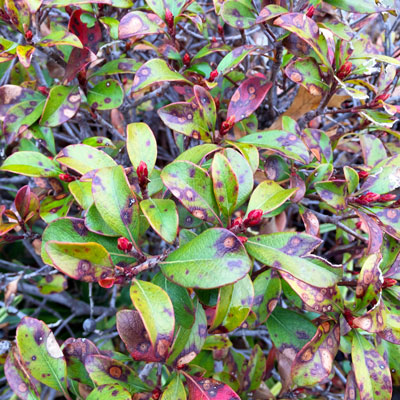
Entomosporium on Indian hawthorn.
Second symptom: infected leaves begin to turn yellow on particular branches. Those leaves hang on the plant rather than dropping.
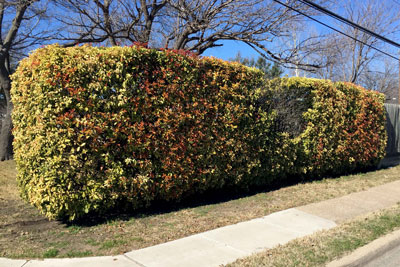
Entomosporium taking entire photinia hedge.
Third symptom: the worst leaves turn almost white and begin to brown around their edges.
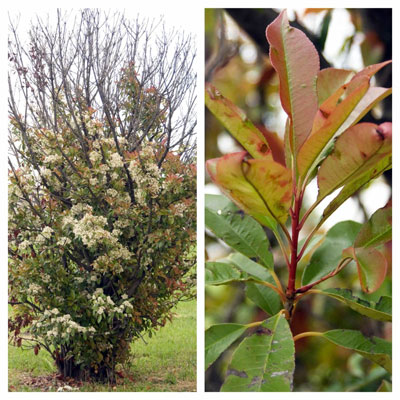
(L) Final stages on photinia
(R) Early impact on photinia
Fourth symptom: branches begin to die entirely.
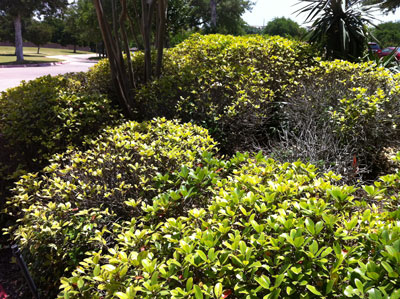
Indian hawthorn in varying stages of dieback.
Fifth symptom: the entire plant begins to die back, eventually dying entirely.
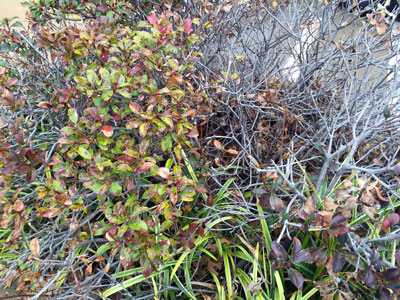
Indian hawthorn plant near death.
Replacement options for redtip photinias: These are large shrubs when used correctly. They can grow to be 15 or 20 feet tall and 10 or 12 feet wide. In the category of large shrubs, Nellie R. Stevens holly is my personal choice. For mid-sized plants (where you might have trimmed redtips occasionally), I would use Willowleaf (aka Needlepoint), Mary Nell or Oakland hollies or perhaps elaeagnus or standard abelias. For somewhat shorter plants in the 4- to 6-foot range, I would use dwarf Burford holly or Italian jasmine.
Replacement options for Indian hawthorns: These normally grow only to 3 to 4 feet tall and wide, so dwarf hollies (Carissa, dwarf yaupon, dwarf Chinese and perhaps dwarf Burford hollies), dwarf abelias, dwarf nandinas and, in South Texas, dwarf pittosporum. My own personal choice would be Carissa hollies because of their similarity in growth to Indian hawthorns’ form and texture (comparatively large leaves).
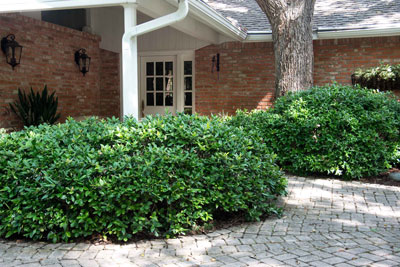
Carissa (L) and dwarf Chinese hollies (R) flank the Sperry front walk.
